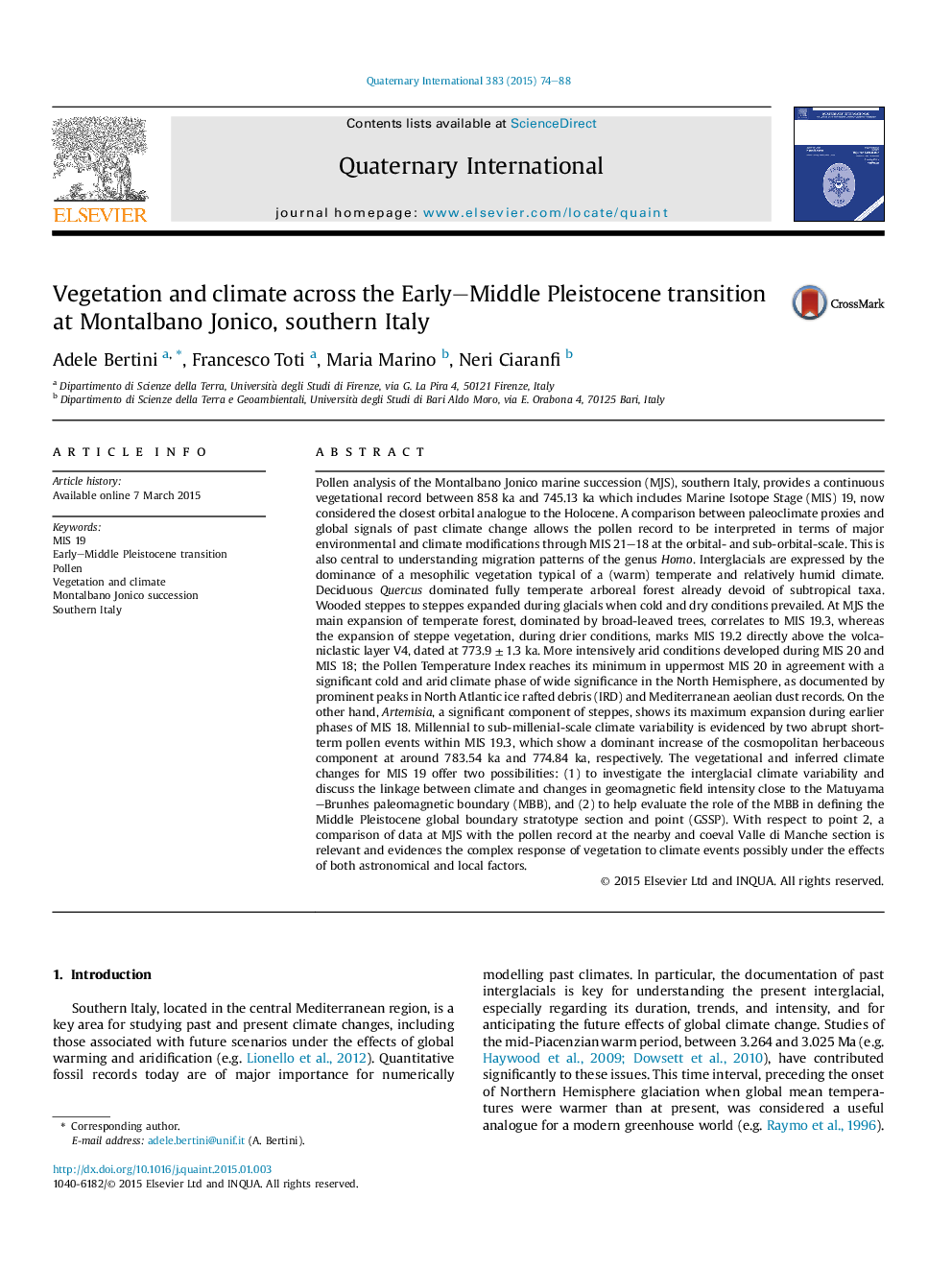| کد مقاله | کد نشریه | سال انتشار | مقاله انگلیسی | نسخه تمام متن |
|---|---|---|---|---|
| 1040525 | 1484115 | 2015 | 15 صفحه PDF | دانلود رایگان |

Pollen analysis of the Montalbano Jonico marine succession (MJS), southern Italy, provides a continuous vegetational record between 858 ka and 745.13 ka which includes Marine Isotope Stage (MIS) 19, now considered the closest orbital analogue to the Holocene. A comparison between paleoclimate proxies and global signals of past climate change allows the pollen record to be interpreted in terms of major environmental and climate modifications through MIS 21–18 at the orbital- and sub-orbital-scale. This is also central to understanding migration patterns of the genus Homo. Interglacials are expressed by the dominance of a mesophilic vegetation typical of a (warm) temperate and relatively humid climate. Deciduous Quercus dominated fully temperate arboreal forest already devoid of subtropical taxa. Wooded steppes to steppes expanded during glacials when cold and dry conditions prevailed. At MJS the main expansion of temperate forest, dominated by broad-leaved trees, correlates to MIS 19.3, whereas the expansion of steppe vegetation, during drier conditions, marks MIS 19.2 directly above the volcaniclastic layer V4, dated at 773.9 ± 1.3 ka. More intensively arid conditions developed during MIS 20 and MIS 18; the Pollen Temperature Index reaches its minimum in uppermost MIS 20 in agreement with a significant cold and arid climate phase of wide significance in the North Hemisphere, as documented by prominent peaks in North Atlantic ice rafted debris (IRD) and Mediterranean aeolian dust records. On the other hand, Artemisia, a significant component of steppes, shows its maximum expansion during earlier phases of MIS 18. Millennial to sub-millenial-scale climate variability is evidenced by two abrupt short-term pollen events within MIS 19.3, which show a dominant increase of the cosmopolitan herbaceous component at around 783.54 ka and 774.84 ka, respectively. The vegetational and inferred climate changes for MIS 19 offer two possibilities: (1) to investigate the interglacial climate variability and discuss the linkage between climate and changes in geomagnetic field intensity close to the Matuyama–Brunhes paleomagnetic boundary (MBB), and (2) to help evaluate the role of the MBB in defining the Middle Pleistocene global boundary stratotype section and point (GSSP). With respect to point 2, a comparison of data at MJS with the pollen record at the nearby and coeval Valle di Manche section is relevant and evidences the complex response of vegetation to climate events possibly under the effects of both astronomical and local factors.
Journal: Quaternary International - Volume 383, 5 October 2015, Pages 74–88